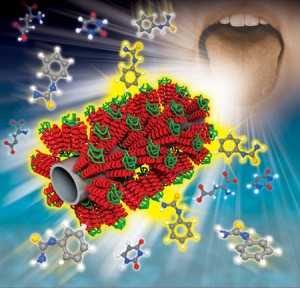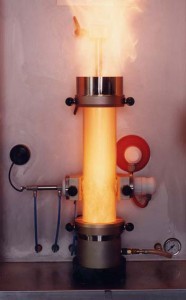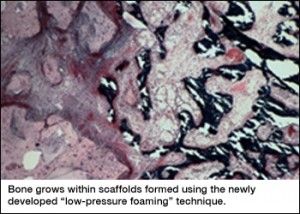This has to be one of the rawest reports I’ve seen and that’s not a criticism. The OECD (Organization for Economic Cooperation and Development) has released no. 35 in its Series on the Safety of Manufactured Nanomaterials titled, INHALATION TOXICITY TESTING: EXPERT MEETING ON POTENTIAL REVISIONS TO OECD TEST GUIDELINES AND GUIDANCE DOCUMENT.
This report is the outcome of a meeting which took place in fall 2011 according to the July 4, 2012 news item on Nanowerk,
The expert meeting on Inhalation Toxicity Testing for Nanomaterials was held on 19-20 October 2011 in The Hague, hosted by the Netherlands, with the aim of discussing the results of the OECD Sponsorship Programme (under the responsibility of SG3) on this specific topic and addressing issues relevant to inhalation toxicity. Fifty experts from the WPMN as well as the OECD Working Group of the National Coordinators for the Test Guidelines programme (WNT) participated in the meeting.
This is a partial list of recommendations from the report,
Recommendations raised by the speakers for the discussion
7. Various recommendations were raised by the speakers that served as points for discussion. These recommendations do not necessarily reflect a general agreement. …
• “Provide explicit guidance for the generation of aerosols (sample preparation) based on the exposure scenario”. Hans Muijser
• “Generation of a test atmosphere should have workplace characteristics, but should be adapted to adjust for rodent respirability”. Günter Oberdörster
• “A choice for a dry aerosol or a liquid aerosol should depend on the given test substance and planned test approach (hazard- or risk driven)”. Otto Creutzenberg
• “Aerosol characterization should include size distribution, mass, number and morphology of the material”. Günter Oberdörster
• “Mass concentration is not sufficient for comparison of nanomaterials of the same chemical composition”. Flemming Cassee
• “Dry powders will appear as agglomerate upon aerosolization, which needs to be addressed in the sample preparation guidelines”. Flemming Cassee
• “Dissolution behaviour of the test substance should be assessed in physiological fluids mimicking various lung-specific pH ambiences (neutral, acid)”. Otto Creutzenberg
• “Data analysis should include interpretation of aerosol characteristics, NOAEL, risk assessment implications, mode of action and a strategy for dosimetric extrapolation to humans. The inclusion of biokinetic data is important”. Günter Oberdörster
• “Include biokinetics in the guidance, since different distribution patterns in the whole organism are likely dependent on physicochemical characteristics of nanoparticle aerosols and the dose at the target site will therefore be different. This will allow the assessment of accumulation of nanomaterials in the body at low exposure levels and long-term exposure. A way to perform it is by radiolabelled materials, chemical elemental analysis to determine organ concentrations and transmission electron microscopy”. Wolfgang Kreyling. Others who have suggested inclusion of biokinetics or recognized the importance were Otto Creutzenberg, Frieke Kuper, Günter Oberdörster and David Warheit. (p. 13)
You actually see who made the recommendations! Speakers discussed carbon nanotubes, titanium dioxide, cerium oxide, zinc oxide and more, all of which you can read about in summary form in this 38 pp. report.
Meanwhile, Nature Nanotechnology has published an incendiary commentary about nanosilver and the latest request by the European Commission for another study. Michael Berger has devoted a July 4, 2012 Nanowerk Spotlight article to the commentary,
A commentary by Steffen Foss Hansen and Anders Baun in this week’s Nature Nanotechnology (“When enough is enough” [behind a paywall]) pointedly asks “when will governments and regulatory agencies stop asking for more reports and reviews, and start taking regulatory action?”
Hansen and Baun, both from the Technical University of Denmark’s Department of Environmental Engineering, take issue with yet another scientific opinion on nanosilver that has been requested by the European Commission in late 2011: “SCENIHR – Request for a scientific opinion on Nanosilver: safety, health and environmental effects and role in antimicrobial resistance” (pdf). Specifically, the EC wants SCENIHR to answer four questions under the general heading of ‘Nanosilver: safety, health and environmental effects, and role in antimicrobial resistance’.
“Most of these questions – and possibly all of them – have already been addressed by no less than 18 review articles in scientific journals, the oldest dating back to 2008, plus at least seven more reviews and reports commissioned and/or funded by governments and other organizations” Hansen tells Nanowerk. “Many of these reviews and reports go through the same literature, cover the same ground and identify many of the same data gaps and research needs.”
Here’s a prediction from Hansen and Baun as to what will be in the next report due in 2013 (from the Nature Nanotechnology commentary When enough is enough in 7, 409–411 (2012) published online July 1, 2012 [Note: I have removed links and footnotes]),
… we predict that the SCENIHR’s upcoming review will consist of five main sections summarizing: the properties and uses of nanosilver; human and environmental toxicity; microbial resistance; risk assessment; and research needs. We also predict that the SCENIHR’s report will say something along the following lines: “Nanosilver is reportedly one of the most widely used nanomaterials in consumer products today but the scale of production and use is unknown. The antibacterial properties of nanosilver are exploited in a very diverse set of products and applications including dietary supplements, personal care products, powdered colours, textile, paper, kitchenware and food storage.” And like many previous reviews and reports, the new report is likely to cite the Consumer Product Inventory maintained by the Project on Emerging Nanotechnologies.
…
We acknowledge that answering the question of how to regulate the use of nanosilver is not easy given the different views of the different stakeholders in this debate and the complex regulatory landscape associated with the many applications of nanosilver. …
…
Arguably, we all want that the pros and cons of regulatory policy options be based on the best available science while taking broader socio-economical and ethical aspects into consideration before deciding on the appropriate regulatory measures concerning human and environmental exposure to nanosilver. Although it is common for independent scientific experts to be commissioned to gather, analyse and review the available scientific information, and to provide recommendations on how to address a given risk, we do not see the need for further reviews. It is time for the European Commission to decide on the regulatory measures that are appropriate for nanosilver. These measures should then be implemented wholeheartedly and their effectiveness monitored.
I predict this commentary will provoke some interesting responses and I will try to add the ones I can find to this posting as they become available.
ETA July 6, 2012: Dexter Johnson weighed in with his July 5, 2012 posting (Note: I have removed a link),
What may make the matter even worse is that we may already have a pretty substantial framework—in the US, at least—on which to base nanosilver regulations, which dates back to the 1950s. It concerned what was called at the time collodial silver, which is essentially what today is called nanosilver.
But getting back to current stagnant state of affairs, it’s hard to know exactly what’s causing the paralysis. It could be concern over implementing regulations in a depressed economy, or just a fear of taking a position. But in both these instances, the lack of action is making the situation worse. …



